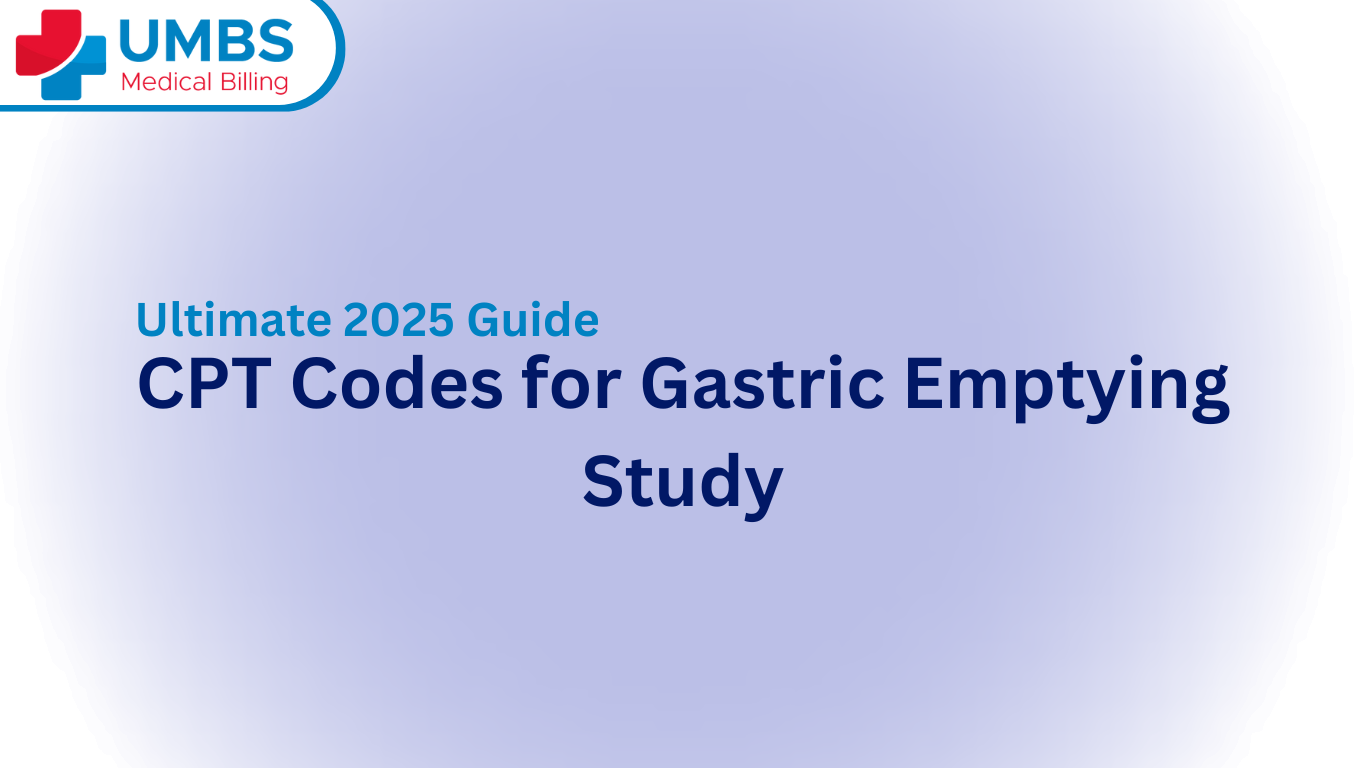A gastric emptying study (GES) is a diagnostic nuclear medicine procedure that evaluates how quickly or slowly the stomach empties its contents into the small intestine. It’s commonly used to diagnose gastroparesis (delayed gastric emptying) and other gastrointestinal motility disorders. The test involves consuming a standardized meal labeled with a radioactive isotope, followed by a series of images taken with a gamma camera to monitor the digestive process.
GES is especially critical for diagnosing:
- Diabetic gastroparesis
- Post-surgical gastric dysfunction
- Functional dyspepsia
- Anorexia nervosa-related GI issues
- Pediatric and geriatric motility problems
Why Accurate CPT Coding Matters
CPT coding for gastric emptying studies is essential for:
- Ensuring accurate reimbursement
- Reducing claim denials
- Maintaining compliance with payer policies
- Supporting value-based care documentation
Medical billing teams must use the right codes based on meal type, duration of scan, and clinical indication. Let’s look at all the relevant codes used in 2025.
Primary CPT Code for Gastric Emptying (Solid Meals)
✅ CPT Code 78264
Description: Gastric emptying, solid meal; with imaging, multiple time points
This is the most commonly used CPT code for GES. It includes:
- A solid meal (often eggs mixed with Tc-99m sulfur colloid)
- Imaging at standard intervals: typically 0, 1, 2, and 4 hours
Key documentation points:
- Patient consumed a solid meal
- At least 2 or more image time points
- Nuclear medicine camera was used
- Radiotracer documented in medical notes
Alternate CPT Codes: Liquid or Combined Meals
✅ CPT Code 78265
Description: Gastric emptying, liquid meal; with imaging
Used when a liquid meal is administered instead of a solid meal. Suitable for patients:
- With severe nausea or vomiting
- Unable to tolerate solids
- With post-surgical conditions (e.g., partial gastrectomy)
✅ CPT Code 78266
Description: Gastric emptying, dual (liquid and solid meals); with imaging
Use this code if both a solid and a liquid meal are consumed during the same study, and imaging captures both phases. This dual test helps assess if one part of the stomach is functioning differently than another.
Billing Radiopharmaceuticals
Gastric emptying studies involve the use of radiotracers. These are billed separately using HCPCS codes.
✅ HCPCS Code A9560
Description: Technetium Tc-99m sulfur colloid, diagnostic, per study dose
Important for outpatient facilities and freestanding imaging centers billing separately for tracer supply.
Real-World Coding Scenarios
📌 Scenario 1: Basic Gastroparesis Study
A patient with diabetes presents with bloating and nausea. You administer a solid meal with technetium sulfur colloid, followed by imaging at 0, 1, 2, and 4 hours.
- CPT: 78264
- HCPCS: A9560
- ICD-10: K31.84 (Gastroparesis)
📌 Scenario 2: Pediatric Dyspepsia With Liquid Meal
A 7-year-old child unable to tolerate solids receives a radiolabeled liquid meal with 2-hour imaging.
- CPT: 78265
- HCPCS: A9560
- ICD-10: R10.13 (Epigastric pain)
📌 Scenario 3: Dual Gastric Emptying for Complex Symptoms
A patient has inconsistent GI symptoms. You administer both solid and liquid meals and perform full 4-hour scanning.
- CPT: 78266
- HCPCS: A9560
- ICD-10: R11.2 (Nausea with vomiting, unspecified)
ICD-10 Codes Commonly Used with GES
| ICD-10 Code | Description |
|---|---|
| K31.84 | Gastroparesis |
| R11.2 | Nausea with vomiting |
| R10.13 | Epigastric pain |
| R14.0 | Abdominal distension (gaseous) |
| K31.9 | Disease of stomach, unspecified |
| K91.89 | Other postprocedural GI disorders |
Make sure diagnosis codes justify medical necessity and match clinical notes.
Documentation Checklist
To support reimbursement and coding accuracy, always include:
✅ Type of test (solid, liquid, or both)
✅ Radiopharmaceutical used
✅ Time points of imaging
✅ Reason for study (clinical symptoms)
✅ Interpretation of delayed/normal emptying
✅ Physician’s signature and date
Common Mistakes to Avoid
❌ Billing 78266 (dual) when only a solid meal was used
❌ Missing documentation on imaging intervals
❌ Using generic diagnosis codes like R10.9 (Unspecified abdominal pain) without context
❌ Forgetting HCPCS codes for radiotracers
❌ Failing to update local payer policies or prior authorization requirements
Medicare & Commercial Payer Notes
Most payers—including Medicare—cover gastric emptying studies when medically necessary. Coverage is often based on:
- Documented symptoms (e.g., persistent nausea, vomiting)
- Failed response to conservative treatment
- Supporting diagnosis in the medical record
Prior authorization may be required for dual studies or repeat testing. Always verify payer-specific guidelines for nuclear medicine tests.
Final Thoughts
Gastric emptying studies are vital for diagnosing serious gastrointestinal conditions, but accurate CPT coding is essential for reimbursement and compliance. By using the correct codes—78264, 78265, or 78266, and including the appropriate HCPCS and ICD-10 codes—you reduce claim denials and maximize revenue.
For clinics and hospitals performing GES, investing in experienced billing support or automated claim scrubbing tools can streamline workflows and improve cash flow.






